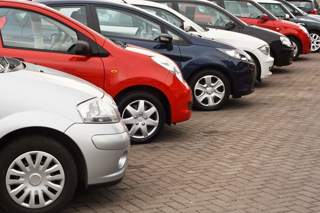Hands up who’s heard of the Nordania case. It’s big in my world, and it could be big in yours. Essentially, Nordania is a by-product of the historic VAT claims centring on the sale of ex-demonstrator cars.
These claims were derived from the European Court decision in another matter known as the Italian Republic case. In effect, the court decided that dealers made a VAT-exempt supply of an ex-demonstrator because they were not able to recover VAT on the initial purchase of the car. VAT exemption means that a restriction must be applied to VAT incurred on general overhead costs.
Around eight years ago, HMRC began to issue assessments to reduce previous windfall claims to reflect the making of exempt supplies. Cleckheaton Holdings and many others appealed against these assessments, with Cleckheaton taking the lead role. Cleckheaton lost on technical grounds but the Judge suggested the parties should negotiate around the method of the calculation, not the theory.
After years of litigation, HMRC has now published a revised basis of calculating the clawback applied post 2009 to M&S/Fleming claims (VAT claims on disposal of ex-demonstrators and de-fleet bonuses centring on 1973-1996) reflecting VAT-exempt supplies made.
From those with appeals in, the reductions based on my own calculations have been significant: up to 55% in the sum assessed plus interest. A tidy windfall. From some dealers with assessments of £10,000 or less, these could be reduced to…. nil. So, if you have had Nordania clawbacks but not made an ‘Italian Uplift’ claim, there is a window to submit a claim and enhance the payback.
I have a negotiated agreement with HMRC which sees the original tables inflated by around 50% for a volume marque and more than double for some other marques, including prestige vehicles. For those who have acquired individual dealerships or groups, there may be scope to revisit past claims.
Keep a close eye on exempt income
A significant percentage of new car sales are on finance, which has resulted in additional VAT-exempt commission being received. On the downside, it has also meant the recovery of VAT on overhead purchases has become more complex.
Manufacturers, as is their wont, continue to demand changes to franchised dealership facilities to reflect the latest corporate identity and branding requirements.
This is invariably a significant outlay for dealers, who need to raise the funding then find they can’t recover all of the VAT incurred due to the partial exemption rules.
This is especially important where dealers either acquire new sites where VAT is charged by the vendor, or where a dealer spends more than £250,000 (net) on refurbishing an existing property. This creates a capital item for the purposes of the Capital Goods Scheme, and additional VAT rules come into play.
I have recently helped a group which had gone from being fully taxable to 2% exempt across an eight-year period but which had continued to recover VAT in full.
Dealers need to keep a close eye on this area and dealing with exempt income needs to be part of a group’s overarching VAT strategy.
Important to accentuate the negative
One of the biggest tax and finance issues facing automotive retailers today is negative equity. HM Revenue & Customs is razor sharp on this area and isn’t shy of issuing assessments plus penalties to dealers.
Some finance houses have worked with dealers to highlight the negative equity sum as a separate item on the invoice paperwork, which is great. Well done chaps!
The VAT issue crops up where a finance house doesn’t cater for separate disclosure. In this situation, the invoice and the finance documents are at odds and HMRC uses the finance documents as the basis of raising an assessment.
The good news is there’s a simple and technically correct work-around I have used successfully in the past on behalf of dealers to have assessments withdrawn.
Any dealer who receives or who has had an assessment in the past four years should look to protect their position as HMRC’s approach is correct from one perspective but not in its totality.
Take care on contributions
Another potential problem area for dealers is that of deposit contribution. There has been much talk about whether dealer/manufacturer contributions amount to a reduction in a vehicle’s selling price.
A dealer deposit contribution is a reduction in the selling price and reduces the VAT payable on the sale. A manufacturer deposit contribution is one of the component parts of how a customer pays for the vehicle. It does not reduce the selling price!
Be careful in submitting claims that include manufacturer deposit contributions as HMRC could levy penalties for the submission of an inaccurate claim.
And finally….
There aren’t many of them around but for those of you who retail Maserati, you’ll know the cars are purchased directly from the factories in Modena or Turin.
Thanks to Brexit, as of January 1st 2021 at the latest, the purchase of these cars will no longer be an intra-community movement but an import.
Affected dealers may need to look at setting up a deferment account and possibly Customs regimes to minimise any adverse cashflow issues. This is only an issue if Maserati doesn’t do something such as setting up a subsidiary in the UK or similar.
Author: Gerry Myton, head of VAT, Harwood Hutton



















Login to comment
Comments
No comments have been made yet.